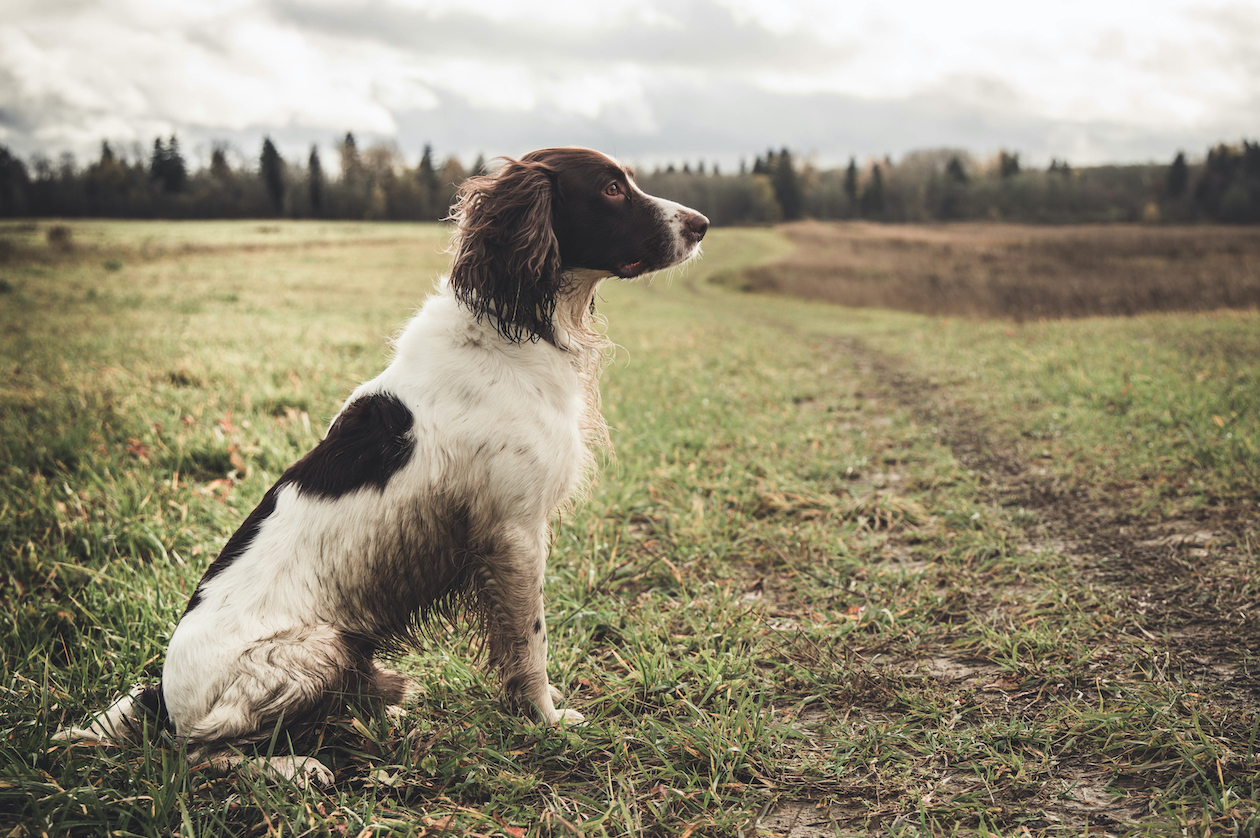Dog’s dinner: how to serve up the right meals for your dog
Giles Catchpole on what we should be feeding our dogs

When I was but a wee boy, I was routinely carted off to watch my big sister trotting round a field on a fat pony. Proceedings began and ended in the stable yard that adjoined a big old house in the vicinity. Besides the loose boxes containing sundry sleek hunters and assorted fat ponies, that yard was home to a handful of Great Danes which were fed on hares. Whole and fresh. I don’t know how often or or why – I suppose daily by the estate’s keeper and because it was cheap – but the spectacle of those massive dogs gnawing at their lunch on the cobbles made a serious impression on me.
In the interests of full disclosure, I spent a good deal of my formative years on the floor with my family’s dogs and I freely admit to a lingering partiality for a Spiller’s biscuit if the lid is off the jar. The black ones have charcoal in them, you know, which is wonderful for settling the liver after a bit of a night out.
Tripe was a popular food for working dogs then. I know a noted trainer who used nothing but the raw version – in deep-frozen lumps. That kept the dogs from bolting it and maintained their teeth, by all accounts. Another swore by ox heart which was boiled and chopped and mixed with a handful of biscuit. Cheap and cheerful.
What should we be feeding our dogs?
A few decades on and pet food is a £3.2 billion a year industry and manufacturers spend heavily on both research and advertising. So what should we be feeding our dogs? Dogs need food for nutrition, health and energy.
Nutrition is a given. We all need food to live and dogs are no exception. However, too little food makes us thin, lethargic and irritable and too much food makes us fat, lazy and ill. And dogs are much the same. Step one, therefore, is to understand what we are feeding and how much of it is appropriate. In this regard modern kibbled dry foods are perhaps easiest to calibrate. Try this for a system: Read instructions on food bag to establish daily requirement for size and breed of dog. Weigh dog. Weigh handful/mug/scoop/bowl/bucket of food. Issue half of daily dose mornings and evenings. Right? Rightish.
According to some folks I have been talking to, not all dry foods are the same. Put it this way: premium foods will have among their ingredients an ideal balance of proteins, fats, minerals and vitamins and no surplus preservatives or fillers. Those good things will be equally distributed through every mouthful. The next grade will have the same content but perhaps not quite so evenly dispersed in each helping. A bit cheaper and you get most of the quality ingredients, quite a lot of the time. Then some of the ingredients, some of the time. Then a few of the ingredients, from time to time. Until, eventually, you just get a bag of stuff for very little money.
So, as far as nutrition is concerned, you do kind of get what you pay for; but just as with any purchase there is posh and there is posh looking. Look at the small print for suitable ingredients and don’t forget that VAT applies to pet food but not to working dogs’ dinners. And being a dog is a job, isn’t it?
Health is a technical area. Modern dogs have a good deal to put up with. Quite apart from all the stuff outside that can play havoc with digestion: rat poison, ant killer, slug pellets, lawn feed, weedkiller, pesticide, fertiliser, COVID masks and discarded fast food, for example, while indoors there are detergents, shampoo, drain cleaner, shoe polish, plastic containers, paper bags, envelopes, soap, chocolate, peanuts – these are only from the past few weeks, you understand – and the electricity bill (not that I minded that); there are also sprays, cleaning products, air fresheners and central heating which can all provoke irritations and allergies, digestive and otherwise. This is not however a treatise on matters veterinary. I did solicit a vet’s opinion on the raw versus cooked debate and the advice was that raw dog food – I might say pet food, actually, which is currently fashionable – should not be stored in a fridge alongside your own dinner because raw products contain all sorts of harmful bacteria and dog food is no exception. So this is for your benefit rather than the dog’s.
“Never mix the raw and the cooked!” Nanny used to say, as a matter of fact, and Nanny was never wrong. Nanny also said that dogs should not be fed scraps, leftovers or gravy and the vet agreed with her. And so do I. So there.
Energy and dogs
Which brings us to energy. Dogs need more energy when they are working mid-season. They need less when the weather is hot as they don’t consume calories keeping warm. If their walks are longer as the days lengthen they might need a little more tea and vice versa. Swimming works up an appetite. Or running with a pack. Training takes energy. Thinking takes energy. Lying in the sun snapping at flies? Not so much.
Age, attitude, environment and exercise will dictate your dog’s energy needs. It is important therefore to be aware of these elements and adjust their regular food intake to match their requirements.
So that’s the dog sorted. Now let’s look at your diet. Ooh, dear, dear, dear! Really?







